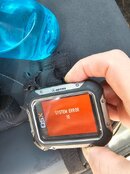David Carron
Contributor
Not intending to be inflammatory or contentious (I’m a hugger not a hater) but that’s a strange question that seems to shift responsibility for prudent judgment and control from the diver to the DC.
I'm not wondering what the correct behaviour for the diver is when the computer's model has been pushed outside its operating limits, but what the correct behaviour for the computer itself is: what might be the best display option if the computer judges that it cannot display a valid ascent profile?
I gave two examples of out-of-limits dive behaviour above, the first of which results in an extended NDL, the second in reduction of total decompression time and I really wonder if in these cases displaying those profiles was the best option.





